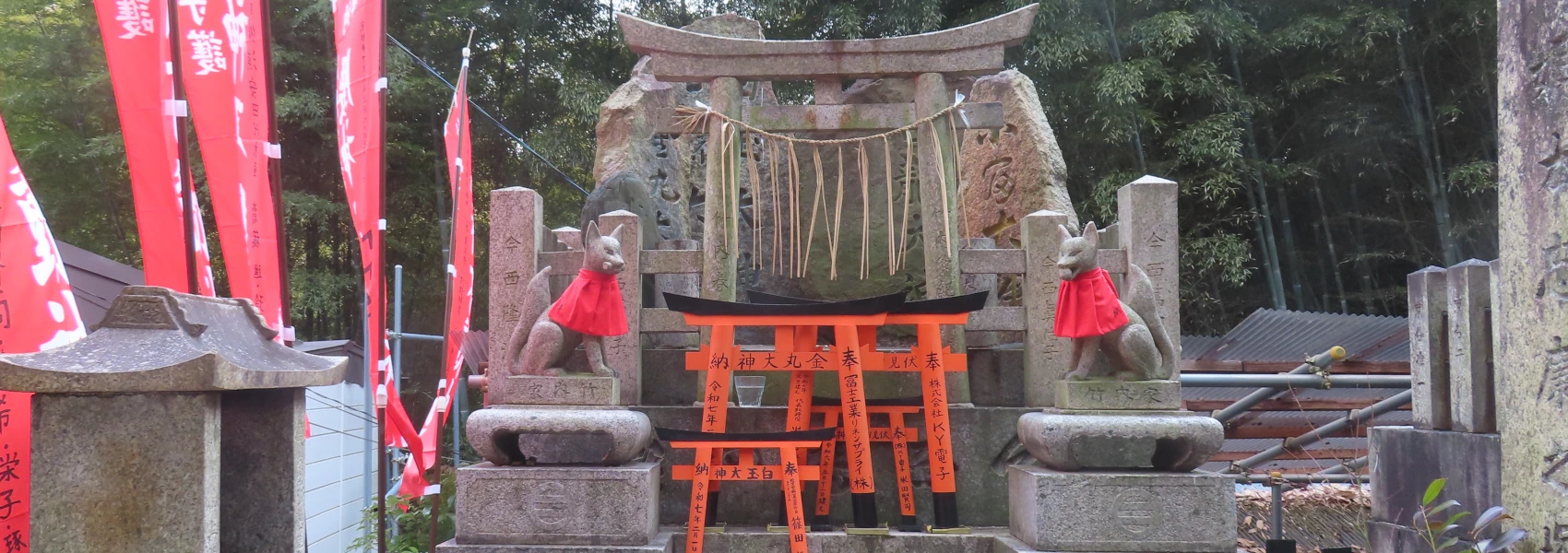I took one trip outside of Tokyo while I was in Japan, and that was to Kyoto to visit the famous Shinto shrine there, Fushimi Inari Taisha. It takes just a bit over two hours on the Tokaido Shinkansen line from Tokyo, plus you get to ride the Shinkansen and if the weather cooperates see Mt. Fuji from the train--which is frankly one of those perfect things. But enough about Tokyo things, this post is all about Kyoto's Inari shrine. Fushimi Inari-taisha is known for its hundreds of vermilion torii gates. There are so many they form tunnels.
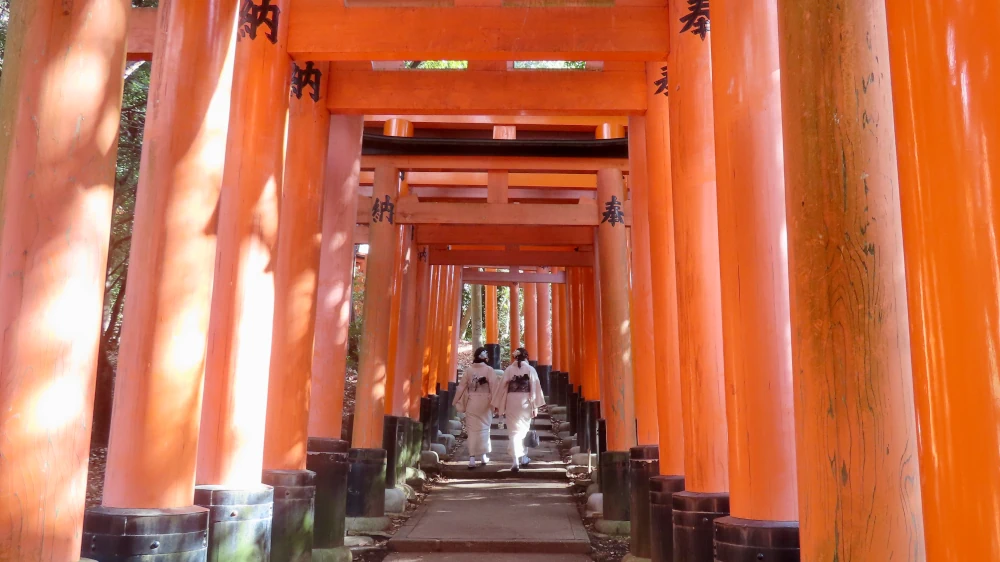 The shrine (and shrines) cover a whole mountain, also called Inari. At the bottom of the mountain, the gates are big and densely placed, and the crowds are also dense. You don't have to go all that far before it gets more quiet. It's also a popular place for people to dress up in kimono and take photos. In the main city, you can even rent kimono. These two women in white kimono happened to be in front of us a bunch and were taking lots of photos of each other in various scenic locations. We kept running into them, as apparently our meandering pace and their meandering pace were quite similar.
The shrine (and shrines) cover a whole mountain, also called Inari. At the bottom of the mountain, the gates are big and densely placed, and the crowds are also dense. You don't have to go all that far before it gets more quiet. It's also a popular place for people to dress up in kimono and take photos. In the main city, you can even rent kimono. These two women in white kimono happened to be in front of us a bunch and were taking lots of photos of each other in various scenic locations. We kept running into them, as apparently our meandering pace and their meandering pace were quite similar.
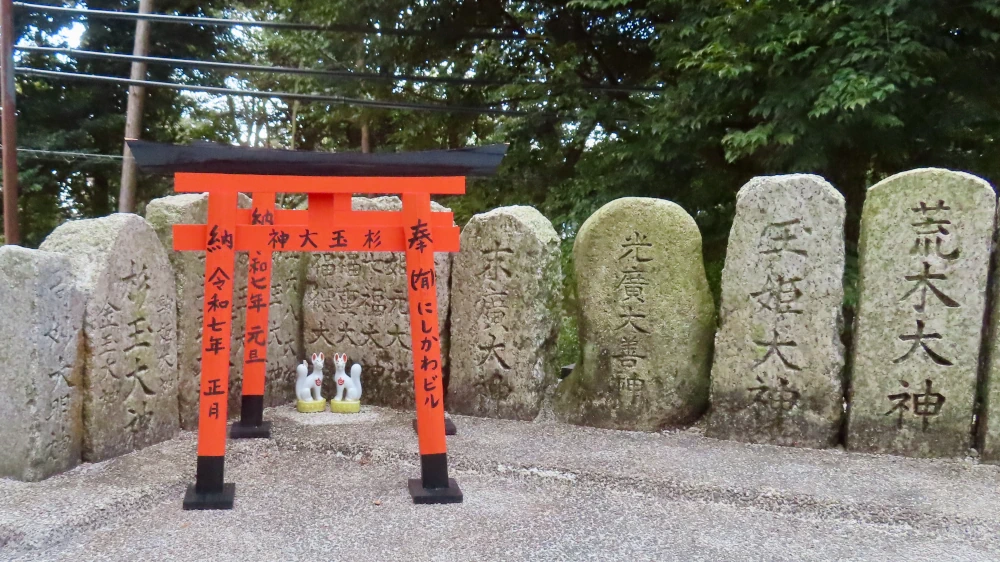
Not far up from the beginning fo the walk, there is a little side shrine. And in the corner of the side shrine, someone had placed a little torii, like I'm talking maybe a foot tall at most, and these tiny foxes. Foxes are everywhere in the Inari shrine because Inari is the goddess of rice and foxes are her divine messengers. An explanation somewhere at the main shrine said it's because foxes would be spotted in rice fields, catching mice and other vermin that damaged the rice. Thus, people saw the foxes as protecting the rice fields.
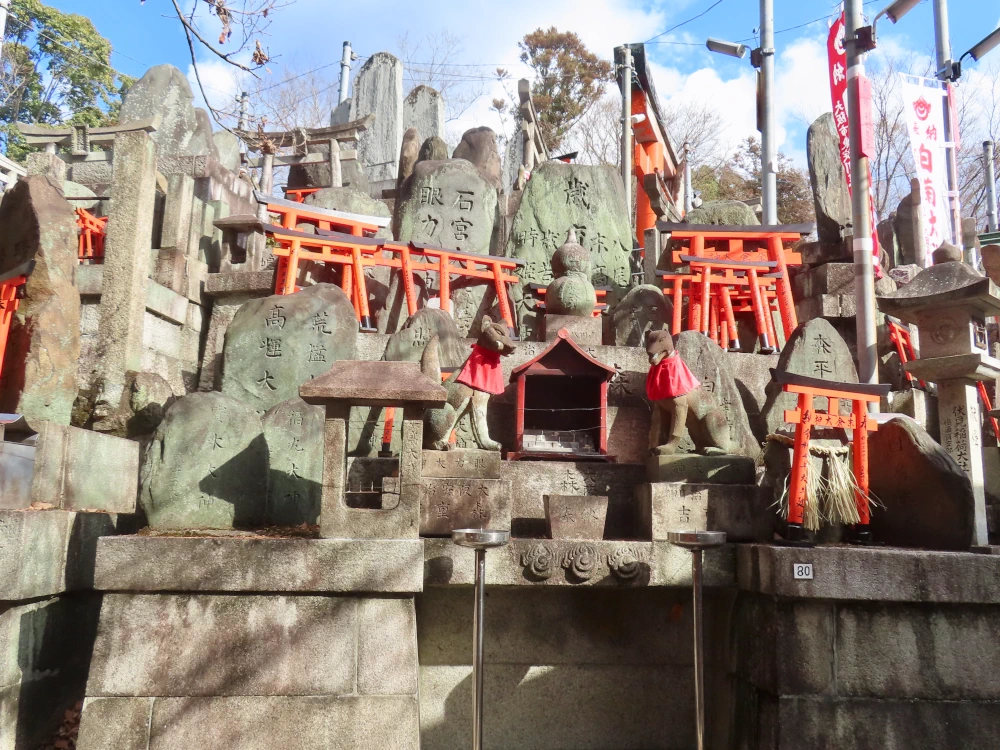
As you climb further up the mountain, there are multiple shrine complexes, each with multiple little shrines with variations of torii, stone shrines, and stone foxes. Every single stone fox wears a red bib. In some of the more remote shrines, the bibs are so faded that they are almost white, but you can definitely tell they used to be red.
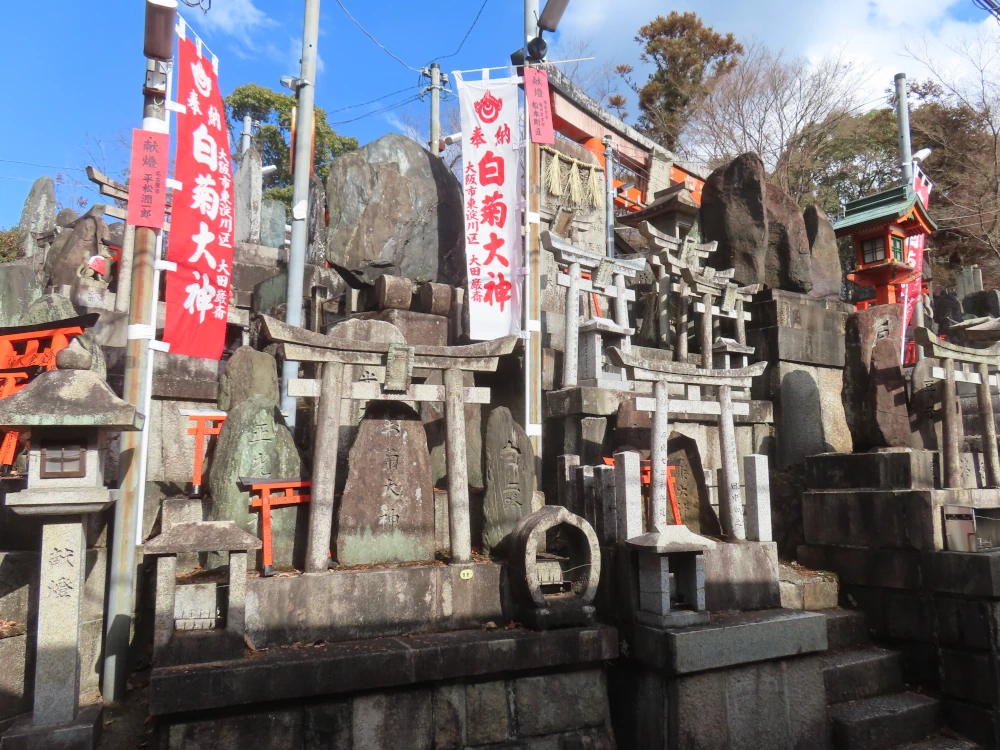
The huge red torii are the most photogenic and what most people think of when they remember the shrine in Kyoto. However, it's these multitudes of shrines with repeating but not exactly identical elements I love the most.
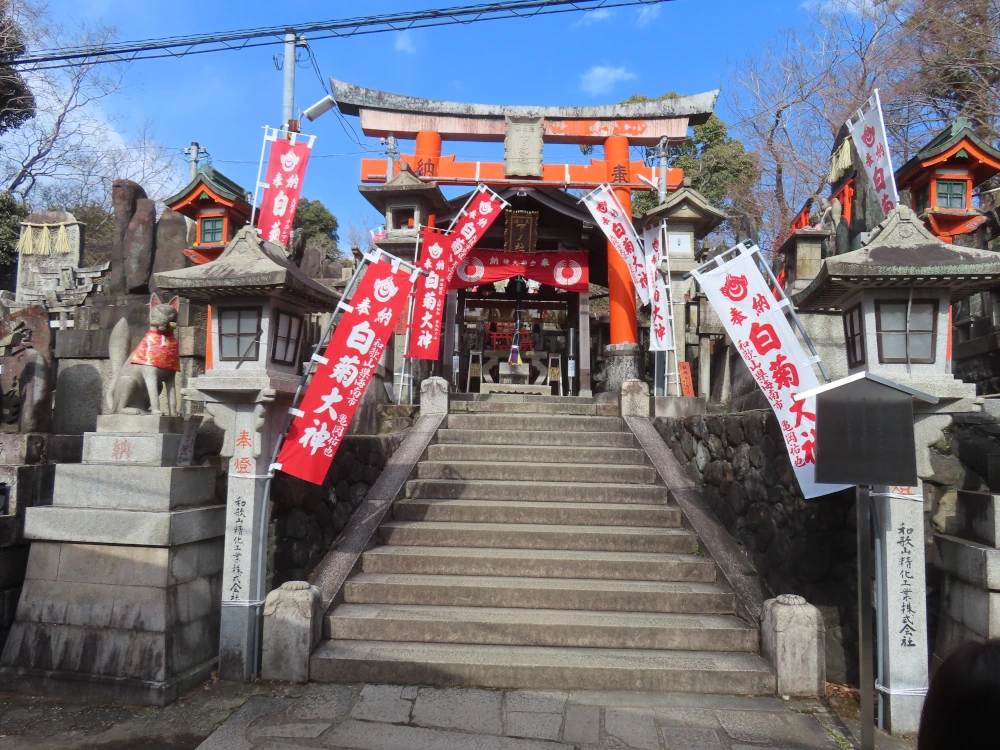
I visited Fushimi Inari Taisha in 2000 and I have remembered and thought about this multiplicity of stone altars and stone foxes and their little red bibs (though perhaps they are aprons) for over 20 years.
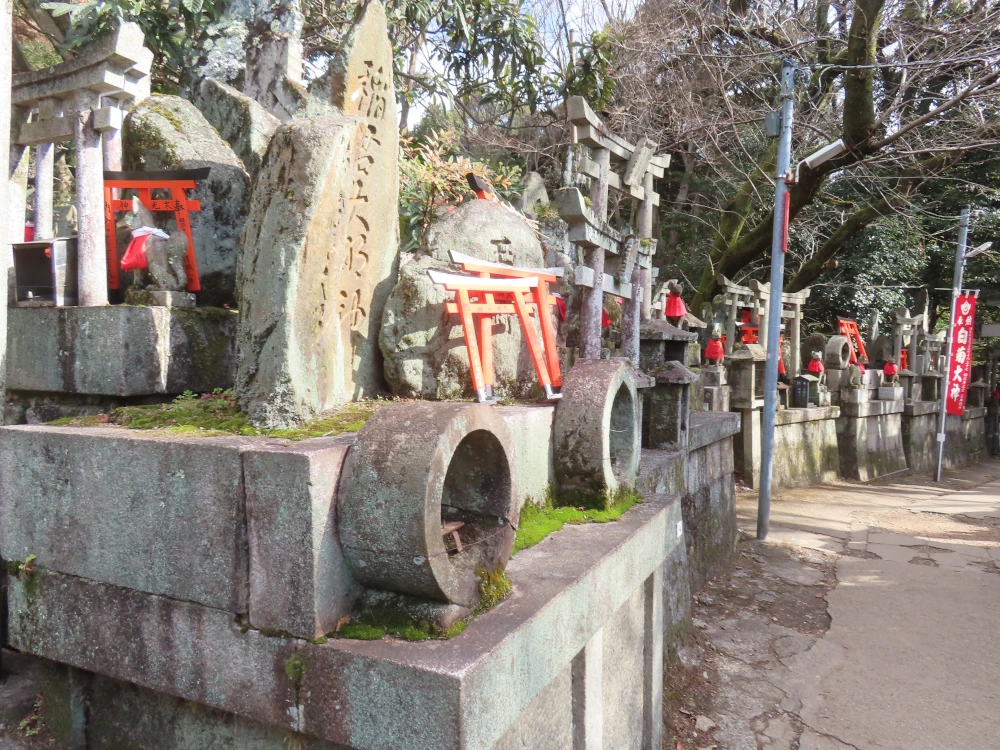
I kept thinking about them whenever I saw things that seem to multiply themselves.
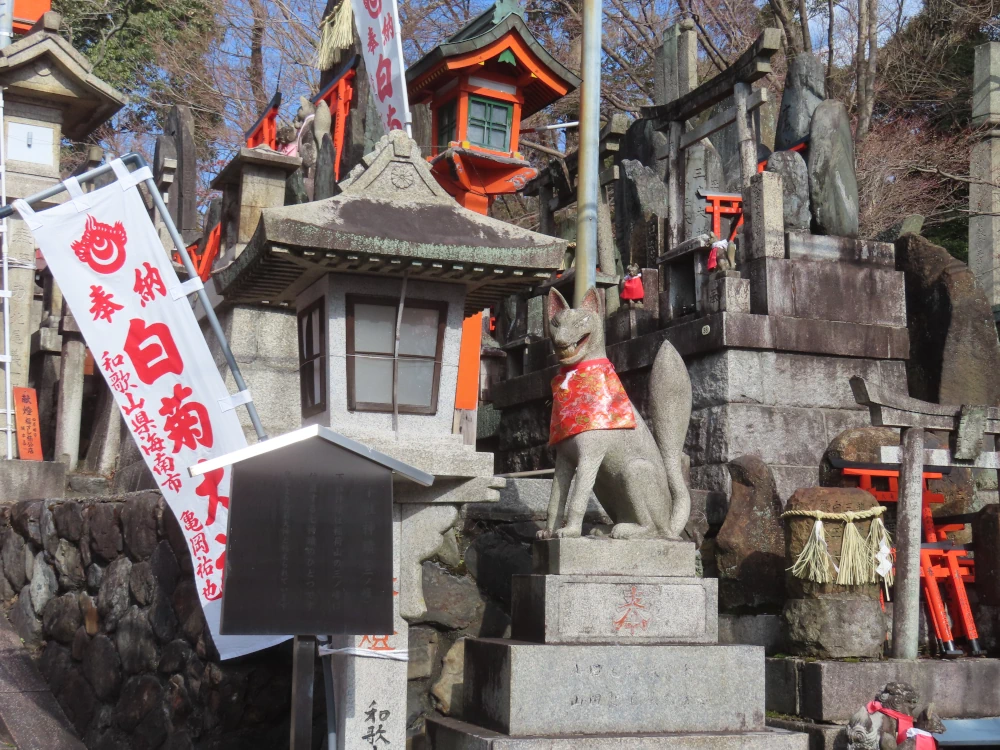
Like, you would walk behind a shrine and find another shrine there with two foxes, and to the side of it another, smaller one, and next to that one, another, and so on, almost like they grew there.
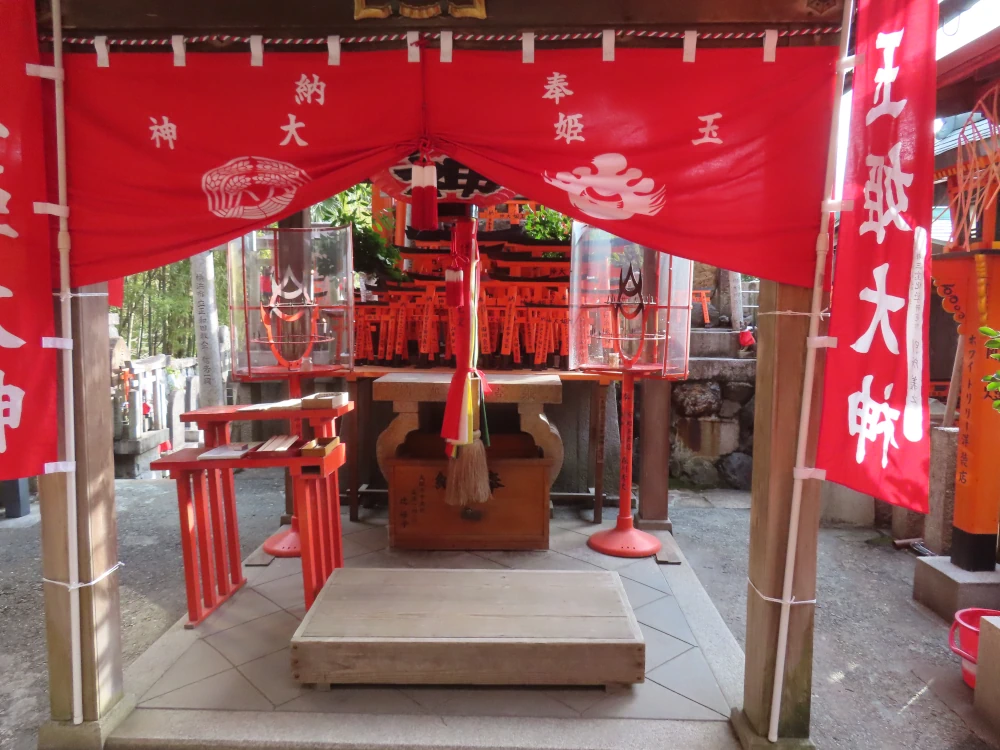
In these little shrine complexes, you also get bigger altars like this one. Some are quite bright colored and laden with what appear to be votive offerings, in this case of miniature torii.
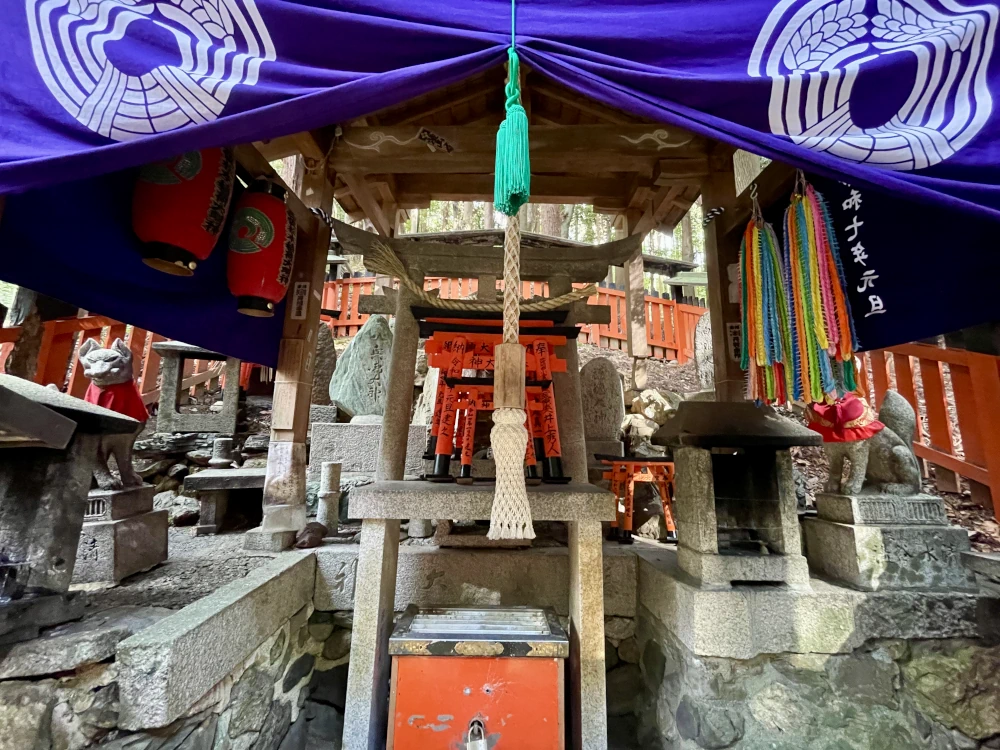
Sometimes the offerings represent incredible effort. The bright garlands on the right side are very small origami cranes. I'm pretty sure that there are 1,000 cranes on each hook. When I first visited this shrine, it was right around New Years, somewhere in the last days of 2000 and the first days of 2001. At that time, all the various offerings are taken down to be burned, and so a the bottom of the shrine, the main shrine plaza really, there were tons of these garlands of paper cranes as well as many other offerings that must have been left through the year and would be burned as part of New Year's ceremonies.
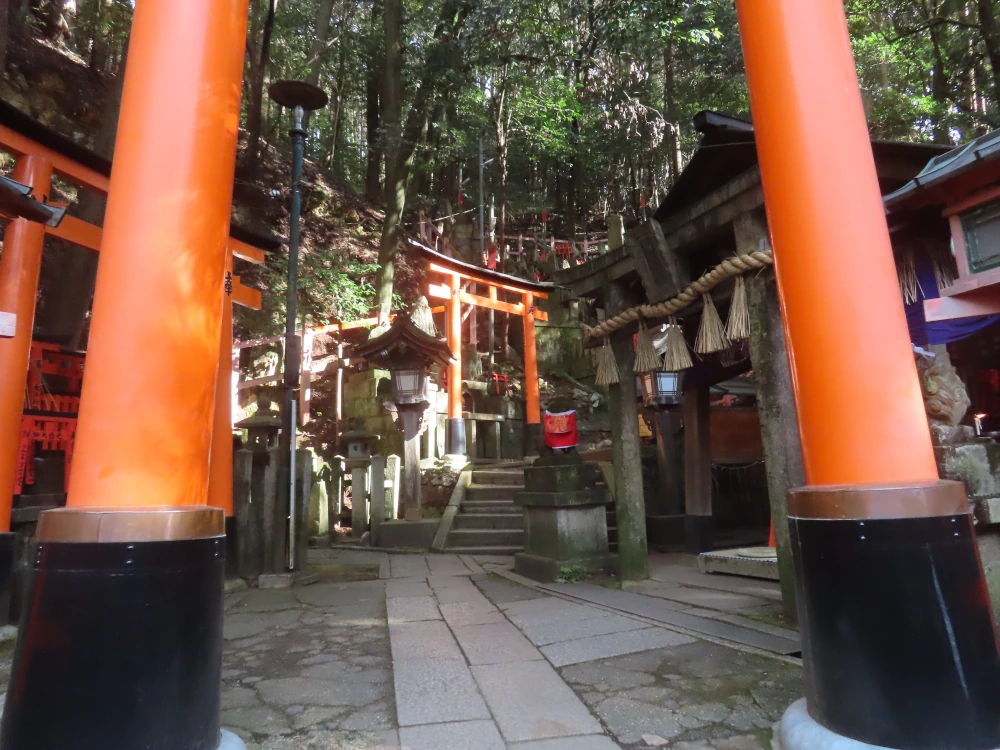
This was my favorite subshrine, very vertical and strangely out of the way even though it's on the main loop. The dappled light made it particularly beautiful.
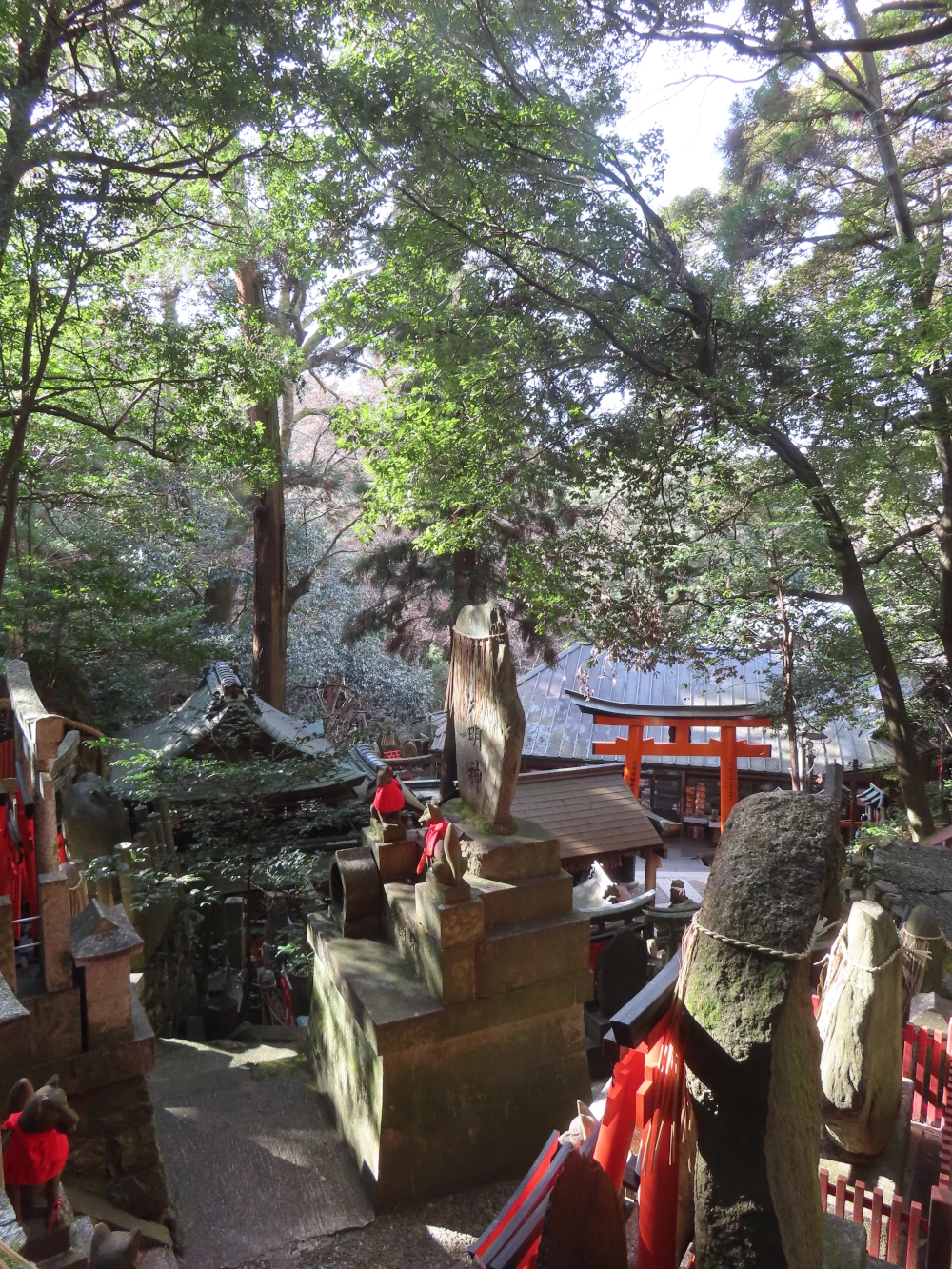 I stood up here for a while absorbing the peaceful feeling. Just a little way down things would get busy again, but not yet.
I stood up here for a while absorbing the peaceful feeling. Just a little way down things would get busy again, but not yet.
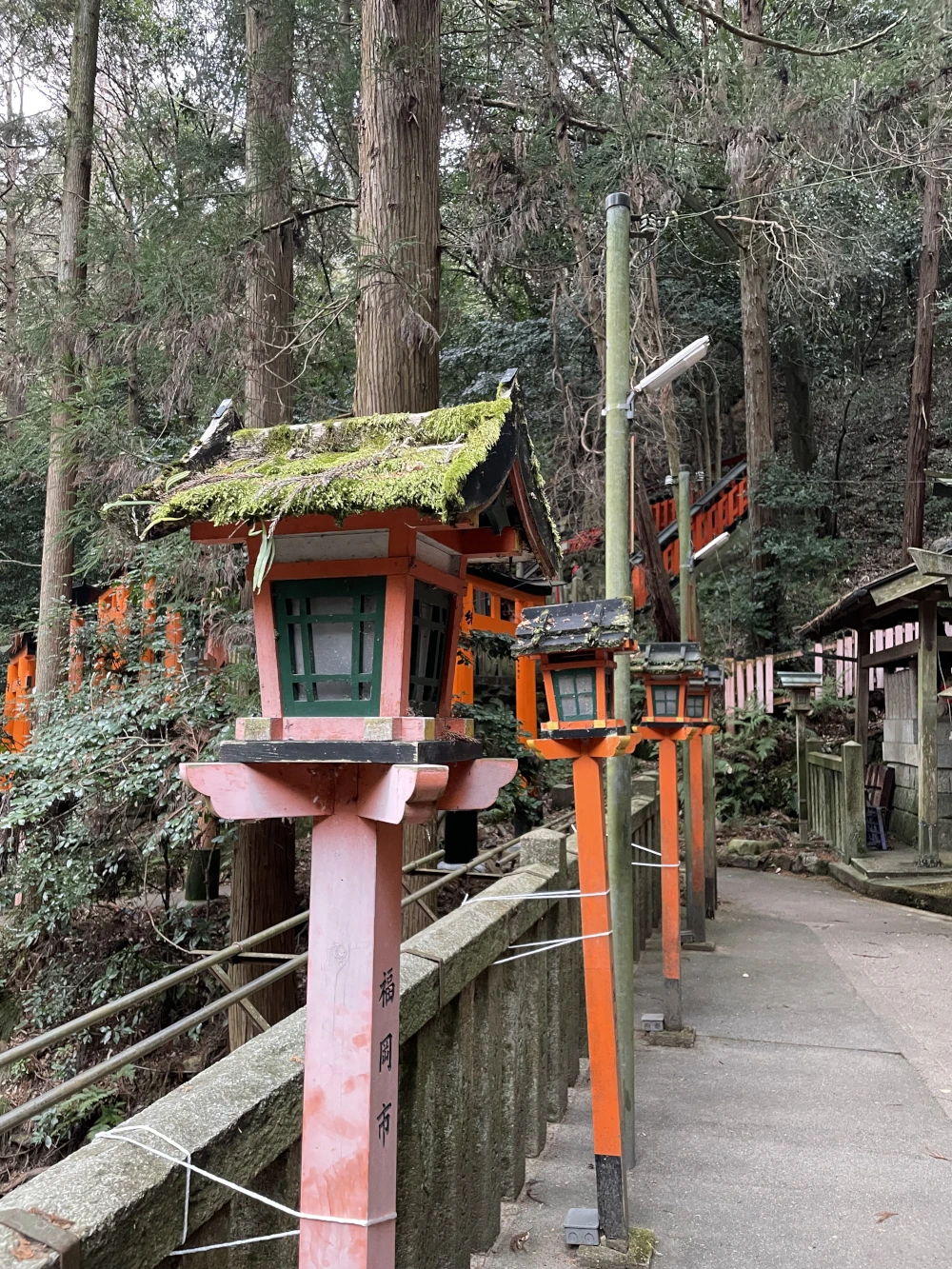
A little off the main loop path, there were yet more little shrines. It was even quieter, and felt almost haunted but in a good way.
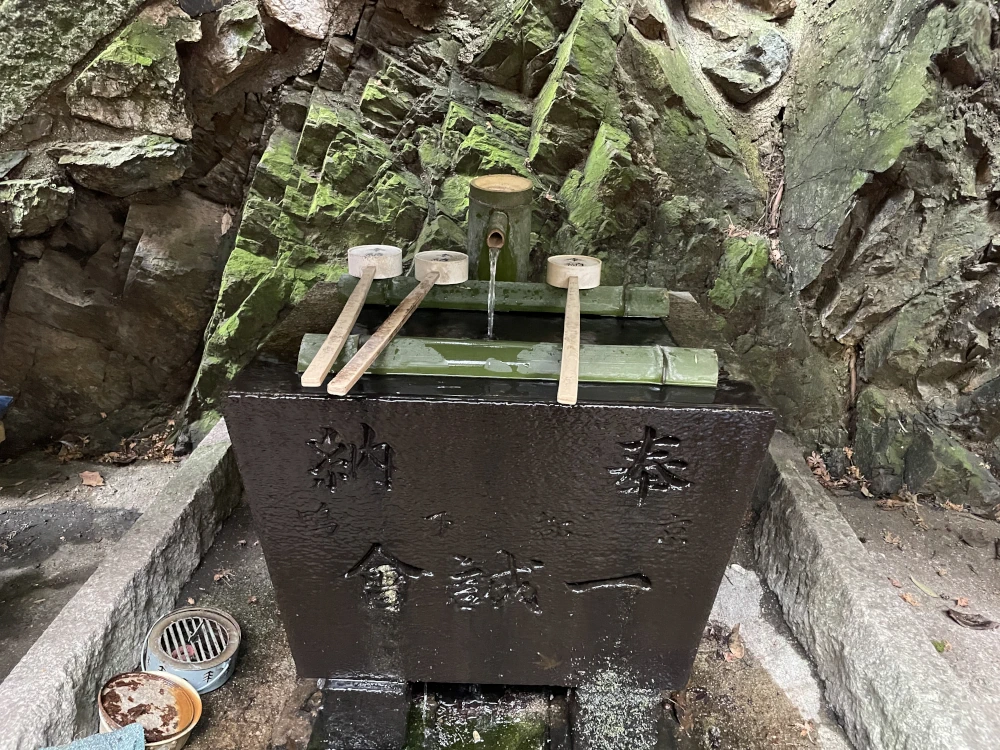 Before praying at a Shinto shrine, it is good manners to wash your hands and mouth. Every shrine has founts where you can perform the ablution, some quite large and fancy, for example made out of stone and with multiple spouts of constantly flowing water that can accommodate a dozen people at a time, and some quite simple with just a container of clean water and some dippers. In a shrine in Tokyo, there was a purification fount that activated when you stepped close to it, kind of the same principle as motion activated bathroom sinks but at a larger scale. I thought it was a nifty way to combine a traditional practice with the spirit of respecting nature by avoiding wasting water. This fount is on the simple side, and I like that, too.
Before praying at a Shinto shrine, it is good manners to wash your hands and mouth. Every shrine has founts where you can perform the ablution, some quite large and fancy, for example made out of stone and with multiple spouts of constantly flowing water that can accommodate a dozen people at a time, and some quite simple with just a container of clean water and some dippers. In a shrine in Tokyo, there was a purification fount that activated when you stepped close to it, kind of the same principle as motion activated bathroom sinks but at a larger scale. I thought it was a nifty way to combine a traditional practice with the spirit of respecting nature by avoiding wasting water. This fount is on the simple side, and I like that, too.
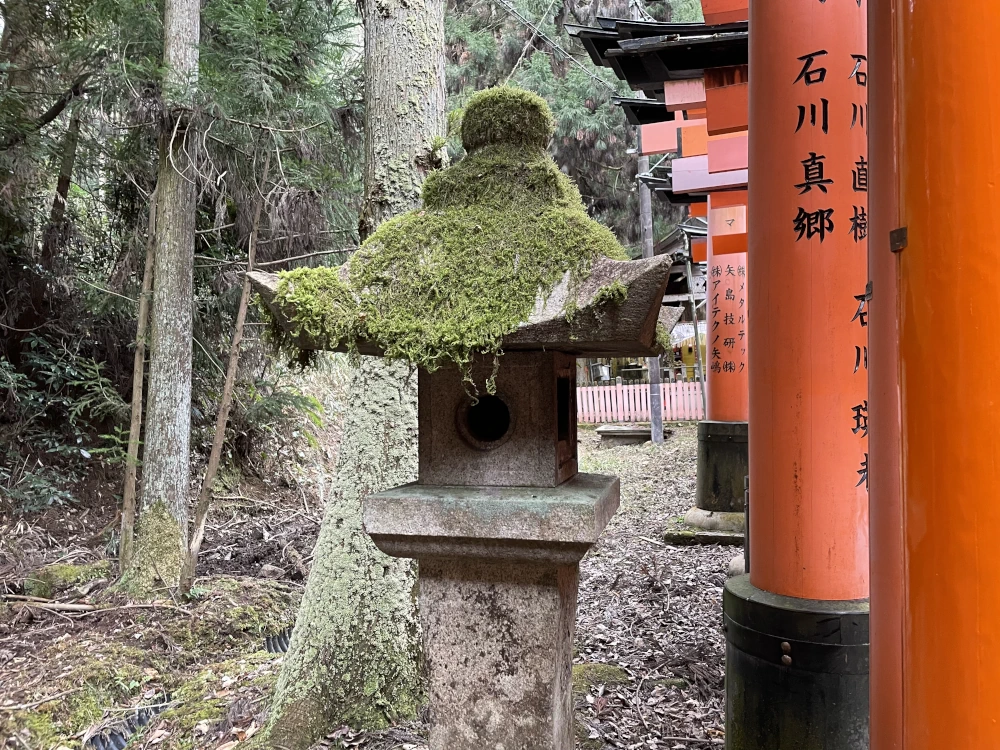
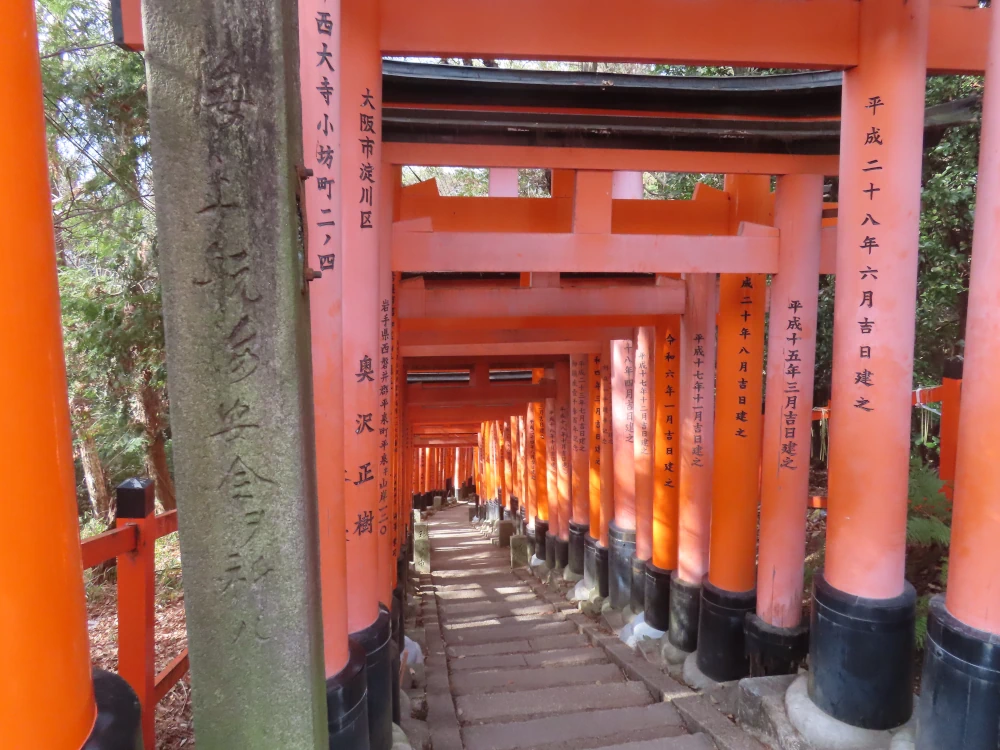
We returned to a more well-travelled part of the shrine and found another tunnel of torii.
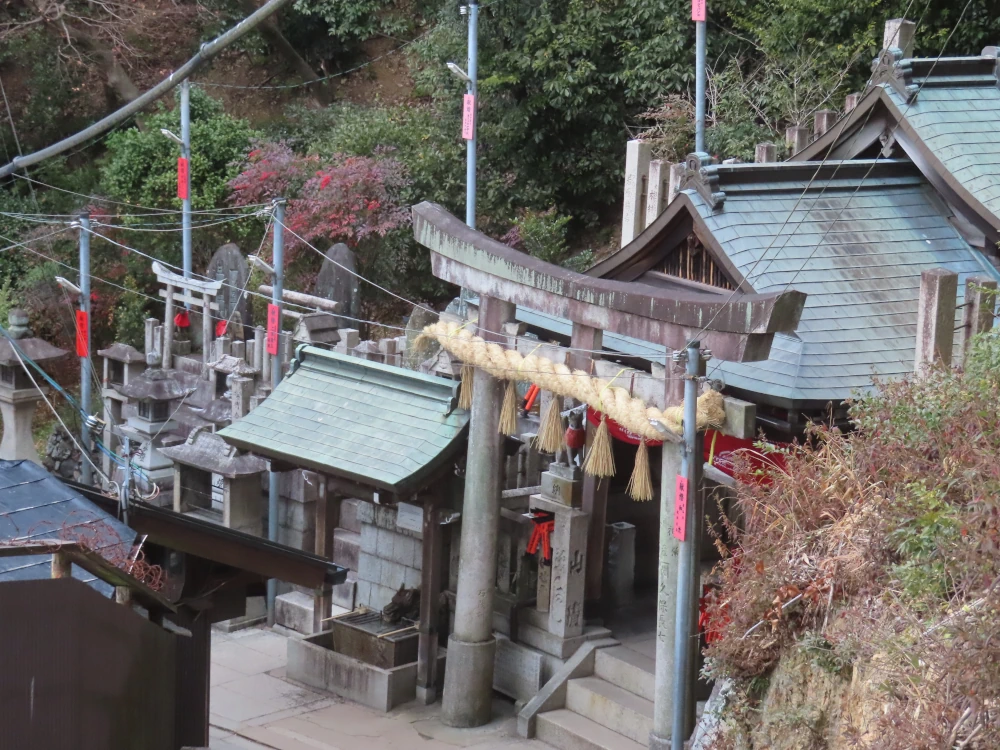
Many shrines have woven straw chains. This one was particularly large.
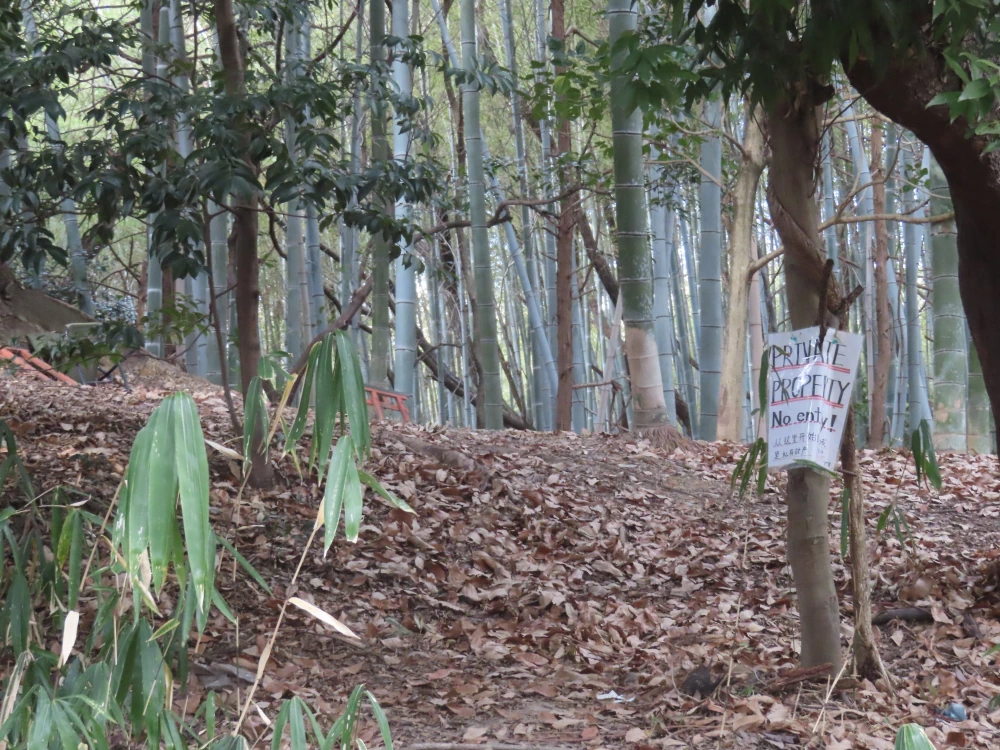
Near the end of the big loop path, you come to a bamboo forest on the edge of the shrine. In this section, we came across some animals.
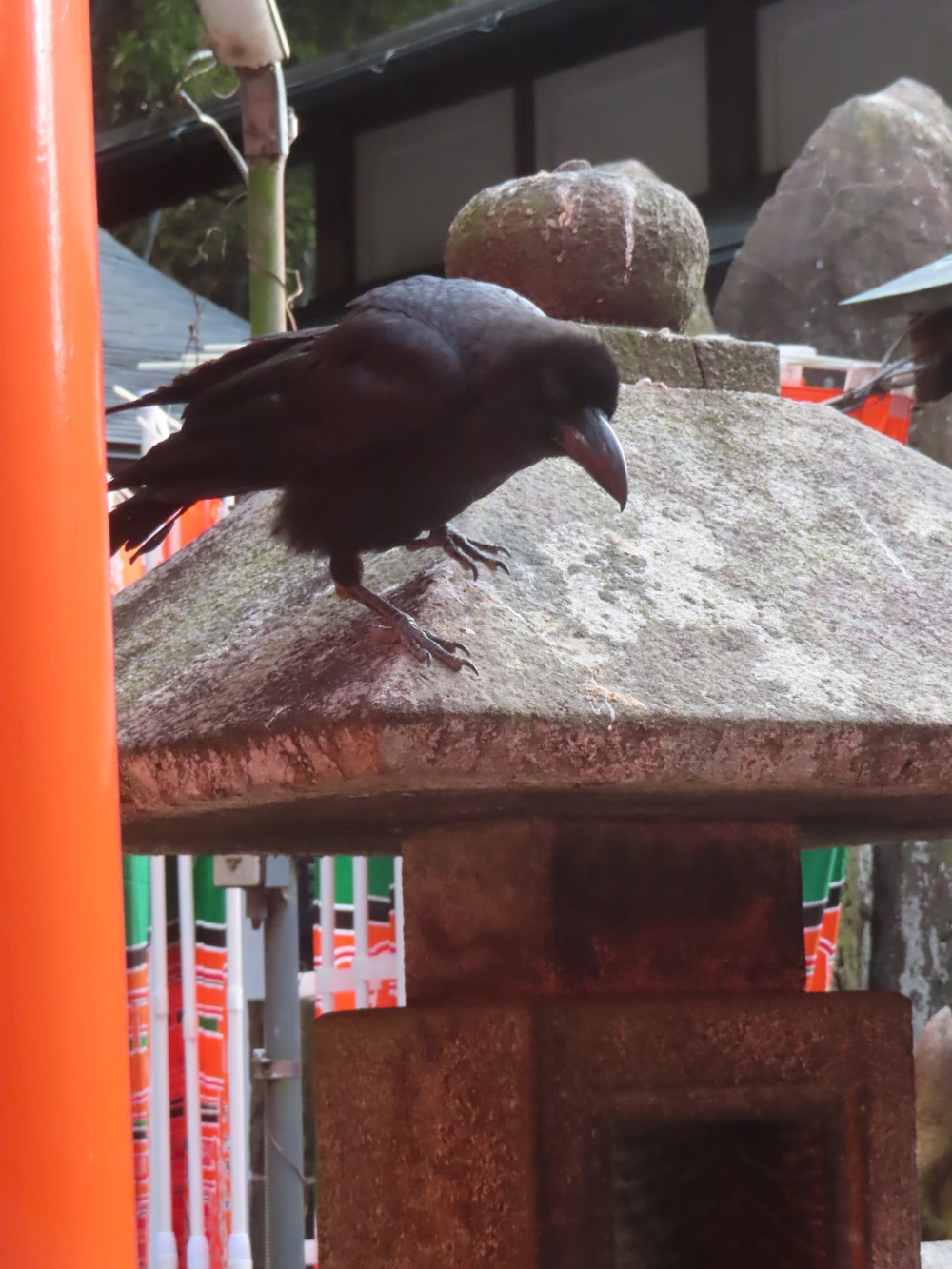
There were quite a few crows on the Mount Inari. They were rather bold. Some people leave food offerings at the shrines and the crows try to eat them.
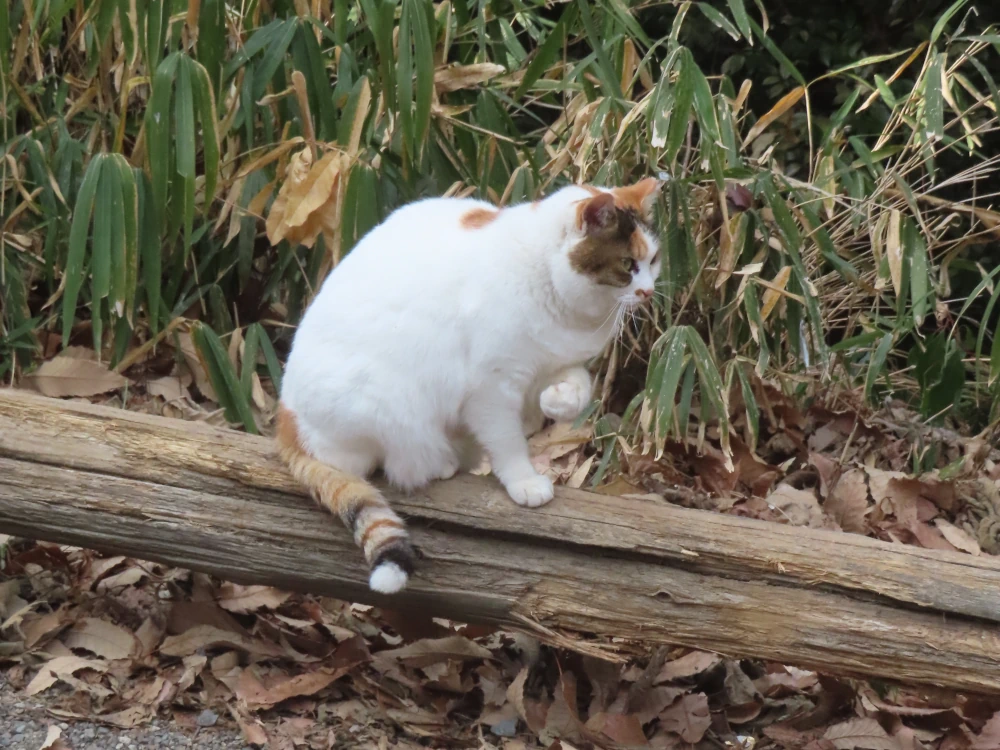 Several cats live on the grounds as well, according to an informative sign. You may pet them, but only if they're up for it. So, in practice, you generally may not pet them.
Several cats live on the grounds as well, according to an informative sign. You may pet them, but only if they're up for it. So, in practice, you generally may not pet them.
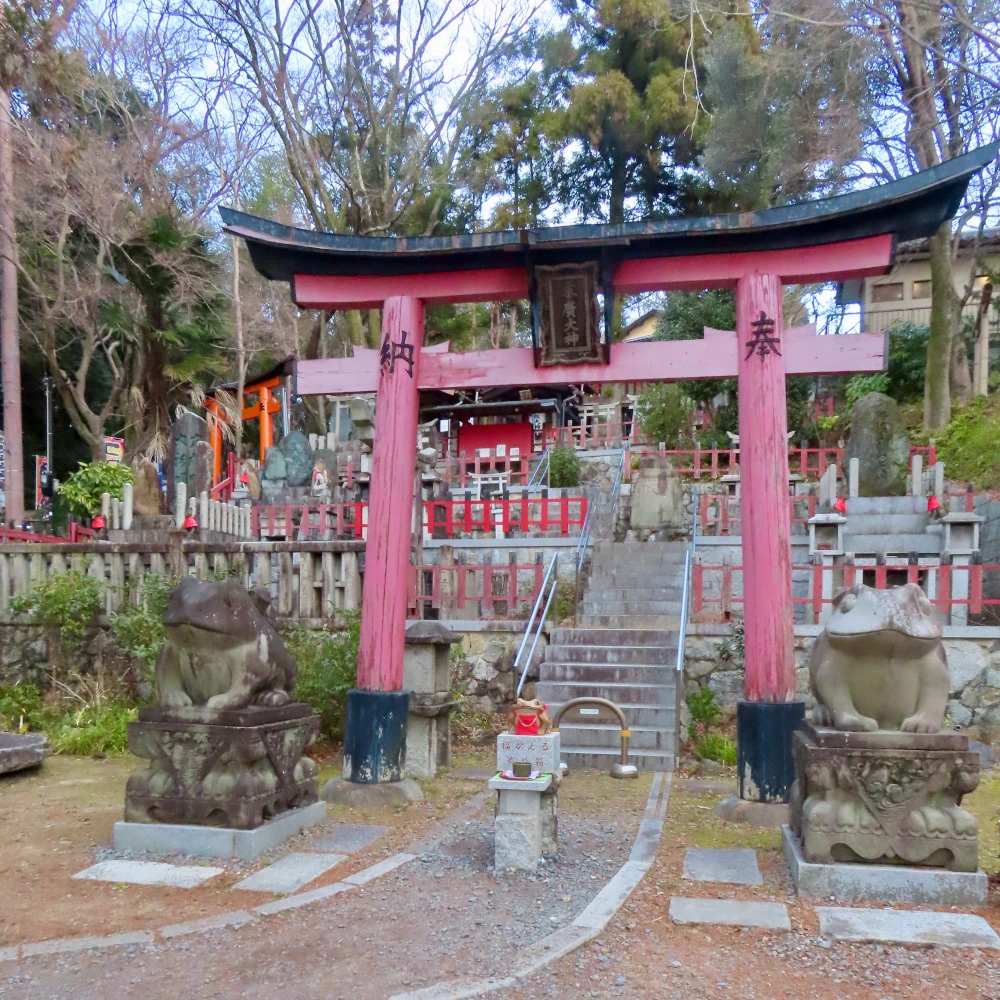
The frog shrine is kind of towards the back of the grounds as you walk down the mountain, so you'd likely see it on your way out if you took the full loop. It was surprising to see the frogs after hundreds of foxes. People appeared to have left bottles of water as offerings to at some of the frog statues. I haven't been able to verify this through official information at the shrine, but I think the frog is Kaeru. Kaeru is a pun on "to return" in Japanese, and so the frogs represent a safe return journey, that is, safe travels, among other things. If so, that's a good way to end a visit to the shrine.
